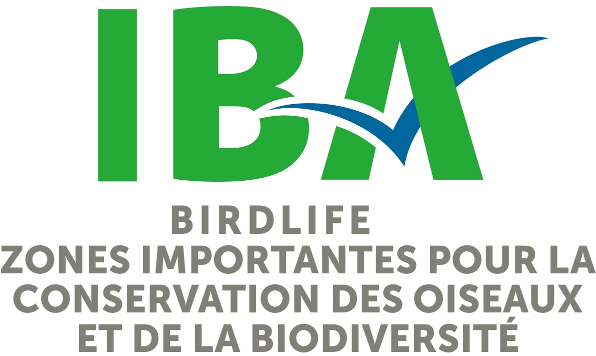Osoyoos Oxbows (BC261)
South Okanagan Valley, Colombie-Britannique
Description du site
The Osoyoos Oxbows are located in the South Okanagan Valley in south central British Columbia. The oxbows wind along both sides of the Okanagan River channel from the north end of Osoyoos Lake to north of Road 18, Oliver with further scattered oxbow sections to the north of Oliver. Most of the site lies along the Okanagan River channel, a canal-like structure with gravel dykes. The old river channel winds back and forth across the flat floodplain, which is about 1 km wide. Water birch woodlands line the oxbows, while a cattail-bulrush marsh lies east of the river mouth where it empties into Osoyoos Lake. This marsh once extended to the west side as well, but has largely been drained or filled on that side. Arid, sandy bench-lands lie directly to the east of the floodplain, extending at one spot to an outlying rock bluff with associated talus.
Oiseaux
Significant Species
Osoyoos Oxbows supports nationally significant populations of Western Yellow-breasted Chat (auricollis subspecies); determined to be Endangered by the Committee on the Status of Endangered Wildlife in Canada (COSEWIC; wildlife species that have been assessed as at risk by COSEWIC may qualify for legal protection and recovery under Canada's Species at Risk Act). Intensive surveys conducted in the IBA between 2006 and 2011 detected between 30 - 61 individuals annually, which represents a considerable portion of the estimated British Columbia population of the auricollis subspecies. Endangered (COSEWIC) Western Screech Owls (macfarlanei subspecies; interior population) also roost and feed in the IBA during the winter somewhat regularly. Casual surveys have detected one or two owls in three winters since 2006.
Other Species of Interest
Numerous other national species at risk are present at this site. At least one Barn Own (Threatened in BC; COSEWIC) has been detected in the IBA each year since 2000; in 2012, four were observed. A pair of Lewis's Woodpeckers (Threatened; COSEWIC) has been seen every other year or so since 2001. One or two nationally listed Special Concern (COSEWIC) Peregrine Falcon (anatum subspecies) have been detected in the IBA annually since 2000, and have been confirmed nesting since 2008. One or two pairs of Long-billed Curlews (Special Concern; COSEWIC) have bred in the IBA each year since 2000. In addition, COSEWIC listed Threatened Common Nighthawk, Barn Swallow, and Bobolink occur in the IBA. Other regionally important species that occur here include provincially rare Brewer's Sparrow, Lark Sparrow, and Grasshopper Sparrow.
Osoyoos Oxbows IBA is a hotspot for owls, with as many as eight species occurring in the area, four of which breed regularly: Northern Saw-whet, Long-eared, Great Horned and Barn Owl (Threatened in BC; COSEWIC). Burrowing Owls (Endangered; COSEWIC) were present at this site until the early 1990s and Short-eared Owls (Special Concern; COSEWIC) have been detected.
The marshes at the north end of Osoyoos Lake, remnants of a once significant chain of wetlands in the Okanagan valley bottom, support Northern Harrier, Virginia Rail, and Yellow-headed Blackbird. The easy access along Highway 97 and the high diversity of birds and habitats makes the Osoyoos Oxbows a premier birding site in Canada.
Enjeux de conservation
Core riparian habitat for Yellow-breasted Chat and Western Screech Owl within this IBA is protected within the South Okanagan Wildlife Management Area, Haynes' Lease Ecological Reserve, and 17 Wildlife Habitat Areas that have been designated for Yellow-breasted Chat. Habitat outside of these areas is threatened by development or expansion of vineyards and pastures, removal of roadside vegetation, and trampling by livestock. Researchers have found several dead chats and owls that have collided with vehicles in the area, which identifies roads as a potential threat to Yellow-breasted Chats and owls (Potvin and Bishop 2010; COSEWIC 2002).
Yellow-breasted Chats, Western Screech Owls, Lewis's Woodpeckers and Common Nighthawks are listed under Canada's Species at Risk Act, which involves development of recovery strategies for these species including the identification of critical habitat and what needs should be addressed.
Three conservation organizations (Nature Conservancy of Canada, Nature Trust of British Columbia and Ducks Unlimited Canada) own and manage land in this IBA to benefit wildlife. Various efforts are underway to improve habitat for birds and other wildlife. For example, parts of the riparian woodlands have been fenced to exclude cattle, cutting of hay on several parcels is routinely delayed until Bobolinks have finished nesting, and several projects have been undertaken to restore water flow to the marshes and oxbows.
Private lands adjacent to protected habitat (e.g. Willow Beach) represent potential future restoration and conservation opportunities.
Catégories ZICO Habitats Usages Menaces Potencielles ou Existantes Status de Protection

